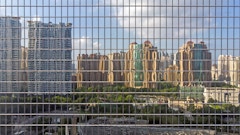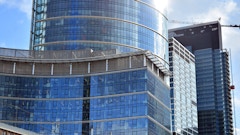
Happening Now
Onsite Testing Demonstration
This on-site testing demonstration of the project’s six-sided mockup will provide a snapshot of the commissioning process. It will review the realities of supporting teams through the various ASTM and AAMA testing requirements typically leveraged in a 0.1-level effort.











